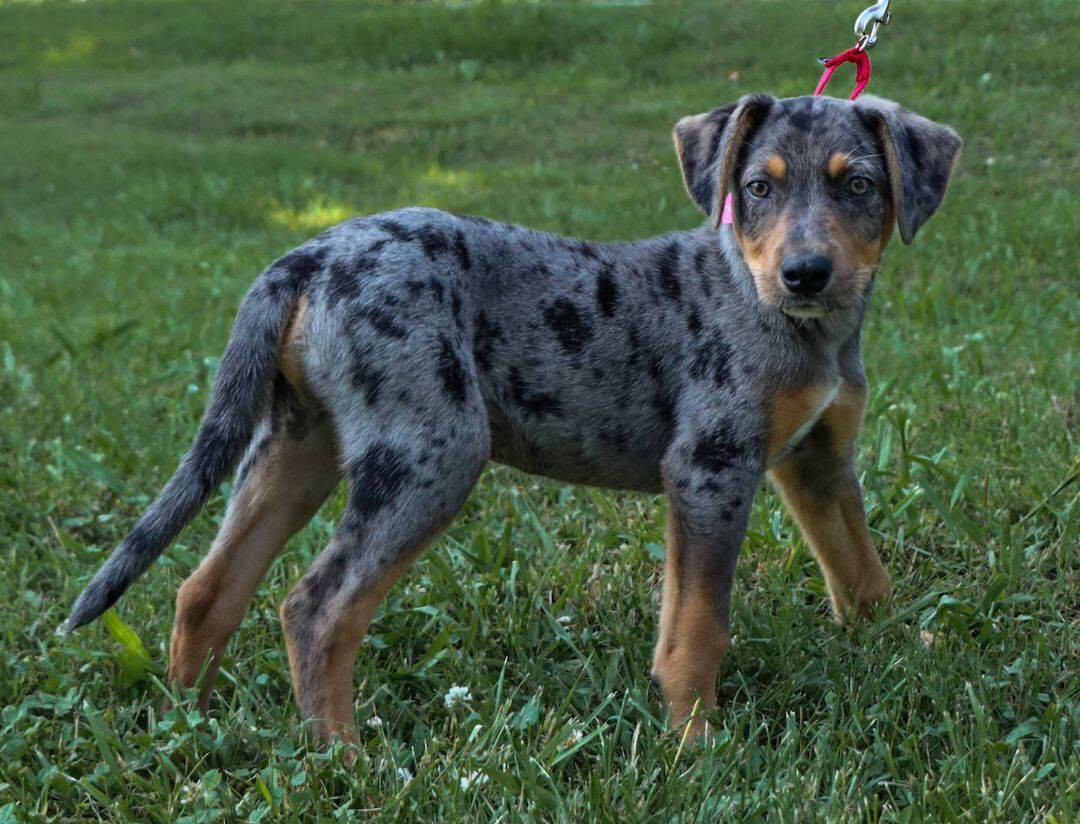
The Catahoula Australian Cattle Dog mix, also known as the Catahoula Blue Heeler mix, represents a fascinating blend of two historically significant working breeds. This hybrid combines the Catahoula Leopard Dog's native American heritage and the Australian Cattle Dog's outback resilience. Both parent breeds share recent wild ancestry - the wolf through Catahoulas and the dingo through Blue Heelers - resulting in an exceptionally intelligent, high-energy working dog. While not suited for casual pet ownership, this mix excels in working roles, inheriting the strong herding instincts, remarkable stamina, and intense drive characteristic of both parent breeds.
Catahoula Australian Cattle Dog Mix Characteristics
Wild Ancestry and Working Heritage
The Catahoula Blue Heeler mix inherits a unique genetic background, with both wolf and dingo ancestry in its recent lineage. This wild heritage contributes to their exceptional working abilities and intelligence. The mix combines the Catahoula's specialized herding technique of creating barriers around livestock with the Blue Heeler's tireless endurance and cattle-driving capabilities.
Physical Traits and Variations
This mixed breed typically displays distinctive coat patterns, often featuring merle coloring with spots and splotches characteristic of both parent breeds. Their ears may be either floppy like the Catahoula or pricked like the Blue Heeler, and some individuals show a combination of both. A notable physical trait is the potential inheritance of webbed feet from the Catahoula parent, which aids in navigating challenging terrain. The mix generally has a muscular, athletic build combining the Catahoula's larger frame (up to 90 pounds) with the Blue Heeler's more compact structure (around 50 pounds), resulting in a medium to large-sized dog with exceptional agility and strength.
History of the Catahoula and Australian Cattle Dog Mix
Origins and Development
While the Catahoula Leopard Dog emerged from Native American dogs mixed with European breeds in Louisiana, the Blue Heeler was developed in Australia by crossing Dingoes with imported herding dogs. This mix combines two distinct regional working dog lineages - the Catahoula's specialized hog and cattle catching abilities from the American South with the Blue Heeler's endurance developed for managing cattle in Australia's harsh outback conditions. The intentional crossing of these breeds is relatively recent, primarily driven by working dog breeders seeking to combine their complementary herding traits.
Training and Exercise Requirements
The Catahoula vs Blue Heeler mix requires extensive daily exercise and mental stimulation starting from puppyhood. A minimum of 60 minutes of vigorous physical activity is essential, along with engaging tasks that challenge their intelligence. Unlike companion breeds, this mix needs a job to channel their intense drive productively. Early socialization and consistent positive reinforcement training are crucial, as both parent breeds can be territorial and independent-minded. Their high intelligence means they learn quickly but may also try to outsmart their handlers. The mix does best with experienced owners who can provide firm but gentle guidance while respecting their working dog nature.
Health and Behavioral Considerations
Genetic Health Implications and Lifespan
This mixed breed demonstrates remarkable longevity potential, with an expected lifespan of 12-16 years when inheriting the Blue Heeler's genetics. Key health concerns include hip dysplasia screening requirements and potential eye problems, particularly in dogs with predominantly white coloring around the eyes. Additionally, dogs with merle coats and blue eyes may have higher risks of congenital deafness. Regular veterinary screening for these conditions is essential for maintaining the mix's health throughout their extended lifespan.
Household Integration and Social Dynamics
While previous sections covered training aspects, this mix's specific household adaptation patterns require careful consideration. When properly socialized from puppyhood, these dogs develop strong protective instincts toward their family while maintaining independence. They demonstrate excellent problem-solving abilities but may become destructive without adequate mental stimulation and physical activity. Their herding instincts can manifest as heel-nipping behavior, especially with small children or other pets. This mix thrives in homes with secure, large outdoor spaces and does poorly in apartment settings due to their need for constant activity and tendency to become territorial in confined spaces.
Conclusion
The Catahoula Australian Cattle Dog mix represents a unique combination of two distinguished working breeds, resulting in an intelligent, athletic, and highly capable dog. This mix inherits notable physical characteristics including distinctive merle coat patterns, a muscular build averaging between 50-90 pounds, and potentially webbed feet. Their genetic background, combining both wolf and dingo ancestry, contributes to exceptional working abilities and intelligence.
These dogs require experienced owners who can provide extensive daily exercise, mental stimulation, and consistent training. While they demonstrate remarkable longevity and generally good health, they need regular screening for conditions like hip dysplasia and potential eye problems, particularly in merle-coated individuals. Their strong herding instincts and high energy levels make them best suited for homes with large outdoor spaces and active lifestyles, rather than apartment living. Proper socialization is crucial for managing their protective instincts and ensuring successful integration into family settings. For those able to meet their considerable exercise and training needs, this mix offers an exceptionally capable and devoted working companion.